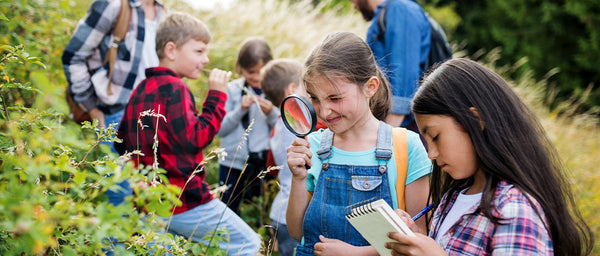
5 Ways to Incorporate STEM Into Your After-School Program
1. Hands-on, engaging projects
One of the main problems that after-school and classroom programs face when incorporating STEM, is that much of the content is hard to understand and does not inspire students to learn the material. Since the advent of the Next Generation Science Standards (NGSS), more and more hands-on projects have been utilized in order for students to think, act and feel like true scientists, technology specialists, engineers or mathematicians. In fact, it has been shown that students learn science better in more informal situations. The After School Corporation (TASC) explained, “When kids ask questions, investigate and explain their results, they better understand how science develops and what being a scientist is like,” (STEM After School, 2014). By using engaging, hands-on STEM projects in your after-school program, you will change the way students feel about STEM education and push them to become 21st Century Learners, which is something we should all strive to be!
2. Granular, easy-to-digest activities
After-school programs are often limited in time and can be unpredictable. Because of this type of an environment, time intensive projects are difficult to utilize and may take students too long before they give up. However, if a larger project is broken up into smaller, more granular activities, it can improve student success rates by giving them points of tangible success as well as good places to start and stop. By breaking up a larger idea into small segments, which are thematically connected, students also have the opportunity to dive into related concepts for extended periods of time and gain a wider understanding of the subject matter. When you think about granular activities, think about slowly learning content and graduating to more difficult tasks. It is quite similar to learning to ride a bike with training wheels first to prepare and set you up for success, then taking off the training wheels and learning to ride on your own!
3. Realistic, specific goals
As mentioned in #2, it is important for students to have tangible points of success, which is why the granular activities work well. In addition, this gives students realistic and specific goals, which they can actually attain in the limited time and different educational setting after-school programs provide. TASC believes, “the emphasis should be on kids learning STEM practices—such as asking questions or planning investigations—rather than mastering content,” (STEM After School, 2014). After-school programs are supplemental, and should provide the type of supplement skills that students of the 21st Century need to succeed—not to mention a bit of motivational fun for students!
4. Student-driven activities
After-school settings are unique in comparison to organized school systems, so instructors and curriculum should be flexible and easy-to-implement to work well. Student-driven activities are not only perfect in this type of environment, but allow students to work on different projects, progress at different speeds and ask the instructor for help when they get stuck. In addition, student-driven activities teach students how to become independent learners as well as foster confidence in their abilities—hooray for 21st Century Skills! Student-driven activities and after-school programs should go together like peanut butter and jelly.
5. Assessment opportunities
You might think that because after-school programs are different from organized school that the need for assessment lessens. However, that is where many programs run into issues because it is extremely important to maintain that familiar sense of assessment students come to learn early on in education. This type of assessment however, should not be rigorous or intense, and that is how after-school programs can set themselves apart. It should be used to monitor student progress as well as show them how far they have come! In the same way that realistic goals in #3 foster confidence in students, this does the same thing. Everyone wants a gold star, but they’ve got to earn it.
References:
How to Design and Run Great Programs and Activities. (2014). STEM After School, 2. Retrieved August 21, 2015, from expandedschools.org









